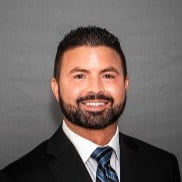

Addiction is unpredictable. One moment someone may seem stable, and the next they’re in crisis—on the verge of overdose, self-harm, or total collapse. According to the CDC, more than 100,000 people in the U.S. died from drug overdoses in just one year, many of them without ever getting the help they needed. When time is critical, families and professionals need a way to respond immediately. That’s where the Field Intervention Model comes in.
The Field Intervention Model is a crisis addiction intervention strategy designed to help people when they’re most vulnerable—during a moment of crisis. Unlike traditional interventions, which are carefully planned and scheduled, this approach happens in real time. It’s about showing up, stepping in, and offering support right when it matters most.
As Maya Angelou once said:
“People will forget what you said, people will forget what you did, but people will never forget how you made them feel.”
In the middle of a crisis, what someone feels—seen, loved, supported—can mean the difference between life and death.
What Is the Field Intervention Model?
The Field Intervention Model is a spontaneous, on-the-spot method of helping someone struggling with addiction. It often happens in response to a triggering event—an overdose, a legal issue, a hospital visit, or a sudden emotional breakdown. It may be led by a trained interventionist, a crisis counselor, or even a prepared loved one who knows how to respond appropriately.
The goal is simple: get the person into treatment immediately.
This model does not rely on surprise confrontations or days of planning. Instead, it capitalizes on a window of opportunity—when the individual is vulnerable enough to listen and more open to accepting help.
Why a Crisis Addiction Intervention Strategy Is Needed
Crisis doesn’t wait. And unfortunately, many families don’t act until it’s almost too late.
Here’s what we know:
- Over 70% of overdose deaths involve opioids, which can kill in minutes.
- Only 10.3% of people with a substance use disorder receive treatment.
- Many individuals only consider treatment after a major life disruption—legal trouble, a medical emergency, or family conflict.
The Field Intervention Model turns those moments of disruption into turning points for recovery.
When to Use the Field Intervention Model
This model is best used when:
- A person has just overdosed or been revived with Narcan
- They’ve experienced a medical emergency or ER visit
- They’re facing arrest, jail, or court for drug-related offenses
- A loved one has walked out, cut ties, or issued an ultimatum
- There is a visible mental health breakdown or psychosis
- The individual has shown signs of suicidal ideation or self-harm
These events create what professionals call a “crisis window.” The Field Intervention Model uses that short window to guide someone into treatment before the urgency fades.
How the Field Intervention Model Works
1. Recognize the Crisis
Timing is everything. The intervention begins when a crisis creates emotional instability or opens the door for change.
2. Assemble a Response Team
This may include a trained interventionist, emergency responders, mental health professionals, or close loved ones who have been coached in crisis response.
3. Approach with Compassion and Clarity
Unlike traditional interventions, this isn’t about carefully written letters. It’s about being present, speaking clearly, and expressing love and concern. The message is: “You don’t have to do this alone. Help is ready—right now.”
4. Offer Immediate Treatment Options
The team must be ready with pre-arranged treatment placements. Whether it’s detox, inpatient care, or crisis stabilization, the goal is to act fast and avoid delays that could lead to a change of heart.
5. Transport and Support
If the individual agrees, someone should accompany them to treatment. If they refuse, the team offers continued support, checks back regularly, and keeps the door open.
Advantages of the Field Intervention Model
- Quick Action Saves Lives
In moments of crisis, people are more likely to accept help. Acting fast prevents further harm. - Reduces Delay
Traditional models require planning that can take days or weeks—time many people don’t have. - Works Well with Resistant Individuals
People who usually reject help may be more receptive during a vulnerable moment. - Encourages Family Involvement
Loved ones can be part of the solution, even without formal training, as long as they’re supported by professionals. - Empowers First Responders and Clinicians
The Field Model can be used by ER staff, police, therapists, or social workers as part of their crisis response toolkit.
Challenges to Be Aware Of
- Emotional Volatility
The person may be angry, disoriented, or confused. Calm, trauma-informed communication is key. - Logistics
You must have treatment options lined up in advance. A missed window can mean lost opportunity. - Rejection
Not every intervention ends with the person saying “yes.” That’s okay—consistency and follow-up are crucial.
Field Model vs. Other Intervention Types
| Intervention Type | Planned? | Crisis-Based? | Best For |
|---|---|---|---|
| Johnson Model | Yes | No | Families seeking structured confrontation |
| Invitational Model | Yes | No | Individuals needing a gentle approach |
| Field Intervention Model | No | Yes | Immediate crisis situations |
Real-Life Impact
Many addiction professionals say some of their most successful interventions happened in the middle of a crisis—not because they had a perfect plan, but because they showed up with compassion and readiness.
One field interventionist shared:
“I’ve pulled people off the sidewalk and into treatment because their friend called at the right moment. That one decision changed everything.”
Don’t Wait for Rock Bottom
The Field Intervention Model teaches us that rock bottom doesn’t need to be death, jail, or total destruction. A single moment of clarity can change the path of someone’s life—if someone is ready to act.
If your loved one is in crisis, don’t wait to make a plan. Act now. Speak up. Offer help. It may be the only chance you get.
Recovery is possible, and hope is never out of reach—even in the middle of chaos.








